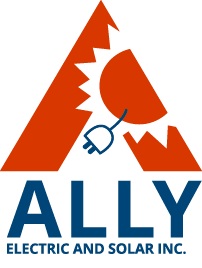How Cheap EV Charger Installations Could Affect Your Home Insurance
/When it comes to installing an EV charger, opting for cheaper materials or substandard installation can have serious consequences—not only for your safety but also for your home insurance coverage. Here’s how insurance companies typically view cheap or improper installations:
1. Impact of Cheap Materials:
Aluminum Wiring: Some cheap installations use aluminum wire instead of copper, which is more prone to corrosion and expansion/contraction. This can lead to loose connections, overheating, and an increased risk of fire hazards. Home insurance companies are particularly cautious about aluminum wiring and may view it as a safety risk that could lead to denied claims if something goes wrong.
Substandard Equipment: Using cheaper, uncertified chargers or components without proper safety certifications can lead to malfunctions, fires, or damage. Insurers often require that all electrical installations meet safety standards, and using low-quality equipment might void your coverage.
2. Insurance Coverage and Risk:
Risk Assessment: Insurance providers assess the risk of electrical fires and property damage. An improperly installed EV charger using cheap materials increases this risk, which could result in higher premiums or a denied claim if something goes wrong.
Non-compliance with Codes: If the installation doesn’t meet local electrical codes or safety regulations, insurers may refuse to cover damages caused by faulty installations. They may also require that the installation be brought up to code before approving any future claims or renewing your policy.
3. Liability Concerns:
If an incident occurs due to poor installation, such as a fire caused by overheating or faulty wiring, your insurance company may shift liability onto you for not using a licensed professional or for using materials that don't meet safety standards.
4. How to Ensure Proper Coverage:
Hire a Licensed Electrician: Always use a licensed professional for installation to ensure safety and compliance with local codes.
Use Certified Equipment: Ensure that the charger and all materials are UL-listed or certified to meet national safety standards.
Document the Installation: Keep records of your installation, including invoices, permits, and inspection reports, to provide proof of proper installation in case of a claim.
Cheap or improper EV charger installations can increase your insurance risk and potentially void coverage. Insurers are particularly cautious about aluminum wiring and substandard equipment, and may deny claims or raise premiums if safety standards aren’t met. To protect your home and ensure reliable coverage, invest in quality materials and hire a licensed electrician for your EV charger installation.

